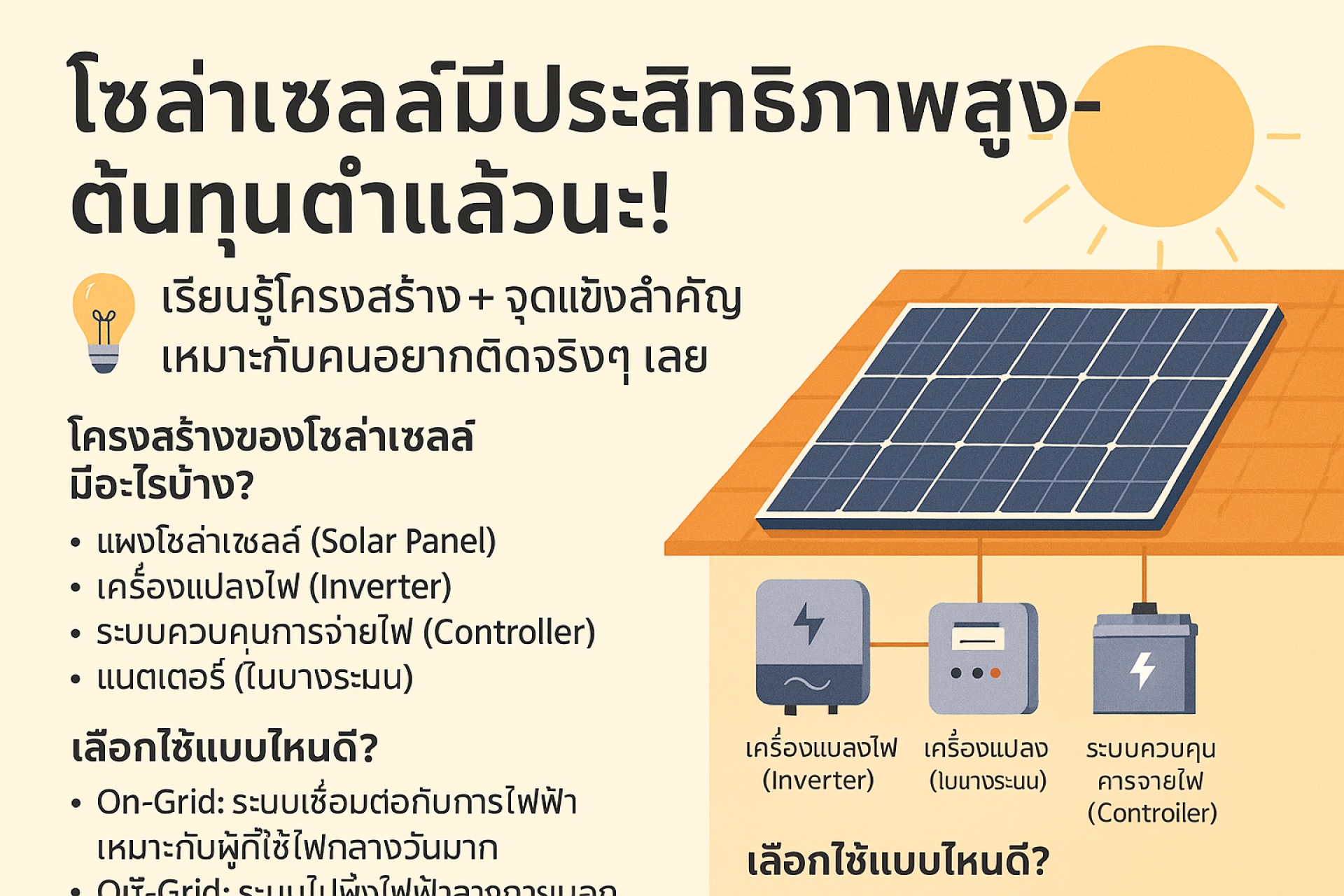Solar Power Made Easy: High Efficiency, Lower Costs – Now’s the Time! ☀️
Last updated: 12 Jun 2025
691 Views

Solar Power Made Easy: High Efficiency, Lower Costs Nows the Time! ️
Solar technology has come a long way. Today, installing solar panels is more efficient and affordable than ever making it a smart choice for homeowners and businesses alike.
Why Consider Solar in 2025?
Higher Efficiency: Modern solar panels can produce electricity even in cloudy or low-light conditions.
Lower Installation Cost: Thanks to mass production and better technology, the price of solar panels and inverters has dropped significantly.
Fast Payback: Most home solar systems pay for themselves in 46 years through electricity savings.
Key Components of a Solar System
A typical home solar power system includes:
Solar Panels Convert sunlight into direct current (DC) electricity
Inverter Converts DC to alternating current (AC) for home use
Controller Regulates system safety and efficiency
Battery (optional) Stores power for nighttime or backup use
Which System Type is Right for You?
On-Grid: Connects to the public utility grid great for homes using daytime electricity
Off-Grid: Fully independent ideal for remote areas with no electricity access
Hybrid: Combines both includes a battery for backup during outages
Who Should Consider Solar?
Homeowners looking to cut electricity bills
Small businesses (cafes, warehouses) operating during daylight
Anyone wanting to reduce carbon emissions and use clean energy
Property owners aiming to boost home value
Solar technology has come a long way. Today, installing solar panels is more efficient and affordable than ever making it a smart choice for homeowners and businesses alike.
Why Consider Solar in 2025?
Higher Efficiency: Modern solar panels can produce electricity even in cloudy or low-light conditions.
Lower Installation Cost: Thanks to mass production and better technology, the price of solar panels and inverters has dropped significantly.
Fast Payback: Most home solar systems pay for themselves in 46 years through electricity savings.
Key Components of a Solar System
A typical home solar power system includes:
Solar Panels Convert sunlight into direct current (DC) electricity
Inverter Converts DC to alternating current (AC) for home use
Controller Regulates system safety and efficiency
Battery (optional) Stores power for nighttime or backup use
Which System Type is Right for You?
On-Grid: Connects to the public utility grid great for homes using daytime electricity
Off-Grid: Fully independent ideal for remote areas with no electricity access
Hybrid: Combines both includes a battery for backup during outages
Who Should Consider Solar?
Homeowners looking to cut electricity bills
Small businesses (cafes, warehouses) operating during daylight
Anyone wanting to reduce carbon emissions and use clean energy
Property owners aiming to boost home value
Tags :
Related Content
As electricity costs continue to rise, installing solar panels has become one of the most effective and worthwhile investments for both homeowners and businesses. Solar energy not only reduces your long-term expenses but also supports a cleaner environment by generating renewable electricity with zero emissions.
26 Nov 2025
Find out the ideal conditions for installing solar rooftops to maximize electricity generation. Direct sunlight, no shade, strong roof structure, and high daytime power use are the golden keys to success.
Solar Rooftop Thailand, Solar Panel Installation, Renewable Energy, Solar Energy Company, Solar Roof System, Energy Stellar
13 Nov 2025
Many people assume that solar panels only work under direct sunlight ☀️
But even on cloudy or rainy days
5 Nov 2025



